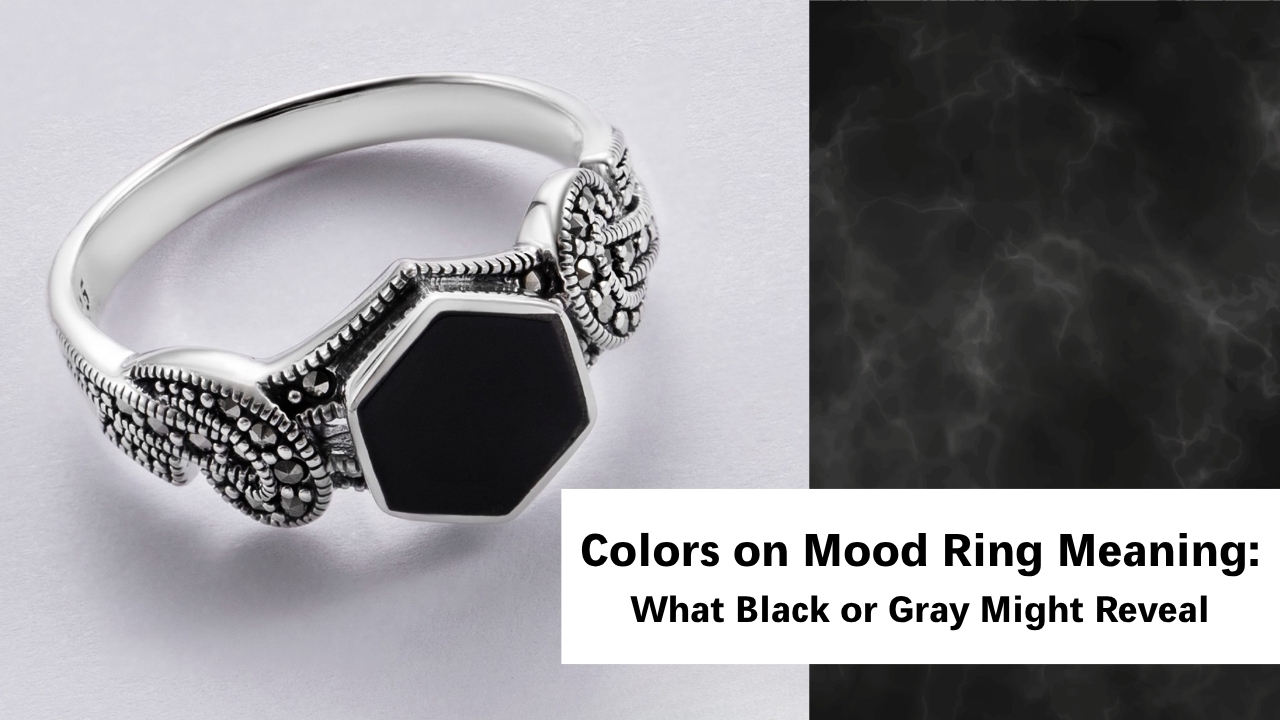
Colors on Mood Ring Meaning: What Black or Gray Might Reveal
- by admin
Mood rings are fascinating accessories that reflect our emotional energy through changing colors. While vibrant hues like blue and purple often draw attention, the darker shades black and gray carry deeper, sometimes overlooked, emotional messages. These colors, while less glamorous, can be powerful indicators of stress, fatigue, or introspection.
In this article, we’ll explore what the colors on mood ring, particularly black and gray, can reveal about your emotional and energetic state especially when you’re going through periods of change, burnout, or emotional withdrawal.925

How Mood Rings Work
Mood rings contain thermochromic liquid crystals that shift color based on temperature. Because our body temperature changes subtly with our emotional states, the ring’s color acts as an indicator of how we might be feeling. Cooler temperatures typically show darker shades, while warmer ones reflect brighter moods.
Colors on Mood Ring: Understanding Black and Gray
Let’s focus on two key dark shades found on mood rings black and gray. While these might seem negative at first glance, they offer valuable insight into energy patterns and emotional needs.
Black – Blocked or Stressed Energy
When your mood ring turns black, it doesn’t necessarily mean something is wrong but it does suggest emotional or physical tension that needs attention.
Emotional indicators:
- High levels of stress or anxiety
- Anger or emotional overload
- Feeling mentally “shut down” or overwhelmed
Possible causes:
- Physical cold (your fingers are too cold for an accurate reading)
- High emotional pressure from work, relationships, or deadlines
- Emotional repression or burnout
What to do:
- Take a break or find a quiet space to decompress
- Practice deep breathing, journaling, or stretching
- Warm up your hands and try again for a clearer reading

Gray – Low or Reflective Energy
Gray is often associated with introspection or emotional withdrawal. It’s a neutral shade, neither fully positive nor strongly negative, but rather one that suggests a need for internal realignment.
Emotional indicators:
- Feeling emotionally distant or “numb”
- Fatigue or low motivation
- A need for solitude or rest
Possible causes:
- Long days without meaningful rest
- Emotional fatigue after overstimulation
- Reflective or contemplative moods
What to do:
- Allow yourself some downtime
- Engage in calming activities like reading or walking in nature
- Reflect on any unresolved feelings or mental clutter
Why These Colors Matter
While many associate mood rings with fun and vibrant emotions, black and gray are just as important. They act as emotional warning lights encouraging you to slow down, reassess, and care for your mental and emotional health.
Learning to accept and respond to these darker colors allows for better self-awareness and emotional resilience.

Tips for Interpreting Mood Ring Colors
- Don’t panic when dark colors appear see them as invitations to pause.
- Track your mood in a journal along with your ring’s color each day.
- Pair color cues with calming habits like aromatherapy, tea breaks, or gentle stretching.
- Understand context a gray color after a restful nap isn’t the same as one during emotional shutdown.
Black and gray on a mood ring may not be as visually exciting as brighter shades, but they carry a deeper emotional message. By recognizing what these colors on mood ring represent, you become more attuned to your emotional and energetic needs.
Let your mood ring be a gentle reminder: even when your world feels heavy or quiet, those moments are part of your journey to self-care and emotional clarity.
Mood rings are fascinating accessories that reflect our emotional energy through changing colors. While vibrant hues like blue and purple often draw attention, the darker shades black and gray carry deeper, sometimes overlooked, emotional messages. These colors, while less glamorous, can be powerful indicators of stress, fatigue, or introspection. In this article, we’ll explore what…